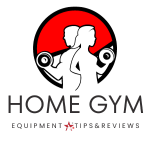Introducing the “Get Stronger Legs with the Ultimate leg push machine“, an innovative gym equipment designed to target and strengthen the muscles in your legs. In this article, we explore the benefits and features of this state-of-the-art machine, comparing it to other modern gym machines and analyzing their respective costs. With a focus on the effectiveness and efficiency of the leg push machine, we aim to provide you with a comprehensive understanding of its capabilities and why it may be the ultimate choice for improving leg strength and overall fitness.

Introduction
In the realm of physical fitness, the importance of strong legs cannot be overstated. Whether it is for improved athletic performance, injury prevention, or simply to enhance daily activities, strong legs are crucial. While there are various exercises designed to target the lower body, one particularly effective tool in building leg strength is the leg push machine. This article aims to explore the benefits of strong legs, delve into the mechanisms of the leg push machine, and provide an overview of different types of leg push machines.
Benefits of Strong Legs
Before delving into the specifics of leg push machines, it is essential to understand the significance of strong legs. Powerful lower limbs offer an array of advantages, ranging from enhanced sports performance to maintaining overall physical health and well-being. Strong legs contribute to improved balance, stability, and efficient movement patterns, enabling individuals to successfully navigate a myriad of physical activities. Moreover, they play a pivotal role in preventing injuries, particularly in the lower extremities, by providing a solid foundation and absorbing impact forces more effectively. The benefits of strong legs extend beyond the realm of athleticism, positively impacting everyday tasks such as climbing stairs, carrying groceries, and even maintaining proper posture.

Understanding Leg Push Machine
The leg push machine, also known as the leg press machine, is a popular piece of equipment in modern gyms. Its primary purpose is to target the muscles of the lower body, particularly the quadriceps, hamstrings, and glutes. The machine typically consists of a seat that slides along a track, allowing users to push against a resistance using their legs. This resistance can be adjusted to suit an individual’s strength level, making it suitable for users of various fitness backgrounds. Understanding how the leg push machine functions is essential for maximizing its benefits.
1. How Leg Push Machine Works
The leg push machine operates based on the principle of resistance training. By pushing against a predetermined load, the muscles of the lower body are stimulated, causing them to adapt and grow stronger over time. The seated position on the machine ensures that the load is distributed evenly across the legs, minimizing the strain on the lower back and reducing the risk of injury. The user can adjust the amount of weight on the machine to vary the intensity of their workout, allowing for progressive overload and continuous improvement in strength. It is important to note that proper technique, including maintaining alignment and avoiding excessive strain, should always be prioritized when using the leg push machine.

2. Different Types of Leg Push Machines
There are several types of leg push machines available, each offering slightly different variations in terms of body positioning and muscle emphasis. Understanding these different types can help individuals determine which machine aligns best with their fitness goals and preferences.
2.1 Horizontal Leg Press
The horizontal leg press machine is ubiquitous in most gyms. As the name suggests, this machine requires users to lie horizontally on their back while pushing against a resistance with their legs. This positioning places the body in a more comfortable and supported position, allowing for a controlled and targeted leg workout. The horizontal leg press primarily targets the quadriceps muscles, with less emphasis on the hamstrings and glutes.
2.2 45-Degree Leg Press
The 45-degree leg press machine offers a variation in body positioning compared to the horizontal leg press. Users are placed at a 45-degree angle, with their back against a backrest and their feet on a platform. This angled position allows for more engagement of the glutes and hamstrings in addition to targeting the quadriceps. The 45-degree leg press provides a more comprehensive lower body workout by involving a greater range of muscle groups.
2.3 Vertical Leg Press
The vertical leg press machine deviates from the traditional horizontal or angled positions. Users are positioned upright, with their back against a backrest and their feet pressing upward. This unique setup primarily targets the quadriceps and places a greater emphasis on the glutes. The vertical leg press offers an alternative to the horizontal and 45-degree machines, providing variation and targeting specific muscle groups.
2.4 Hack Squat Machine
The hack squat machine resembles a traditional squat but with added support and stability. Users position themselves on a platform and push against resistance using their legs. This machine places a significant emphasis on the quadriceps, hamstrings, and glutes, making it an excellent choice for an all-around lower body workout. The hack squat machine also provides added safety by reducing the risk of falling or losing balance during the exercise.
7. Conclusion
The leg push machine is a valuable tool for building strength and enhancing the lower body. Its benefits extend beyond aesthetics, with strong legs contributing to improved athletic performance, injury prevention, and overall physical well-being. By understanding the mechanisms and various types of leg push machines, individuals can make informed decisions on how to incorporate this equipment into their fitness routine. Whether opting for the horizontal leg press, 45-degree leg press, vertical leg press, or hack squat machine, the leg push machine offers a convenient and effective means of achieving stronger legs.
